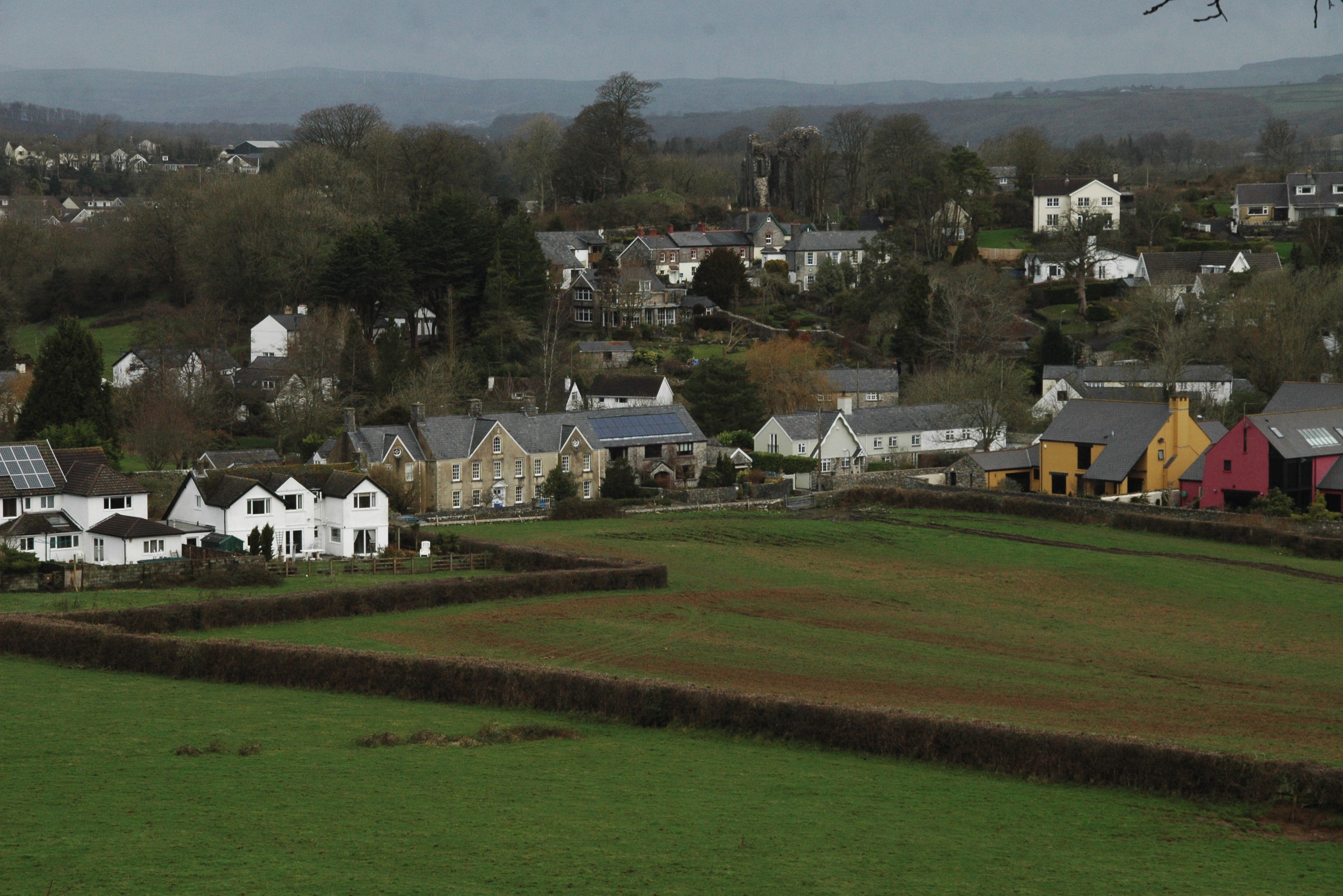The earliest known dwellings in Llanblethian date to the late Iron Age and Romano-British period and were situated on Llanblethian Hill (or “Mount Ida”) and occupied by part of the Silures tribe. The hill fort's extensive banks and ditches, while now reduced in height, remain clearly visible.
Little is recorded locally about the period from the withdrawal of the Romans to the arrival of the Normans around 1120 when the St Quentin family annexed this part of Glamorgan from a Welsh ruler. The St Quentins established three manors and became the first manorial lords with Llanblethian being one of them. The extent of the lordship is believed to correspond roughly with those of the parish's bounds. It was out of this lordship that the new town of Cowbridge was carved and its immigrant English and Norman citizens granted a Charter in 1254. The ancient borough of Cowbridge and the even more ancient manor of Llanblethian were reunited under today's Town Council in the local government re-organisation of 1974.
Llanblethian's castle is known as “St Quentin's Castle” which belies the fact that the masonry structure standing above the River Thaw today was built by Earl Gilbert de Clare in the early C14th. However, it may occupy the site of an earlier keep. It's also unclear if his castle was ever finished; though it's imposing and recently restored grade 2 listed gatehouse is recorded to have served as a prison in Tudor times. Facing it on Mount Ida across the river the remains of another medieval fortification can still be made out.
Although the earliest reference to a Christian church here is about 500 A.D., the present church dates to the C12th with evidence of further building in the subsequent three centuries. Its tower is traditionally attributed to the generosity of Lady Anne Nevill who, as a direct descendent of the de Clares, brought the title to the Lordship of Glamorgan to her marriage to Richard of York; subsequently King Richard III. The preaching cross on the green in front of the church is medieval and grade 2 listed. Major restoration works to the church's interior in the 1890's revealed medieval wall paintings in the plaster which it was then fashionable to remove.
Today Llanblethian is virtually without commercial or industrial premises. It lies in a predominantly agricultural setting surrounded by farms whose names are still echoed in today's domestic dwellings such as Kingscombe House and Stallcourt House. However, it has boasted at least three water mills. Corn was ground at The Mill at the foot of St Quentin's Hill from the early C16th; while another mill stood opposite the parish hall and a fulling mill - for producing traditional Welsh flannel - was powered by Factory Brook from the C14th until production ceased in 1913. In the mid C20th Llanblethian's Post Office was to be found on Factory Road and there was a bakery on Greenfield Way. Picton House on Church Road and Belgrave House at the start of Llanmihangel Road were once the Picton Arms and the King's Head; the Cross Inn alone continues as a public house.
Llanblethian enjoys a wealth of other ancient, fine and some listed buildings. Among the oldest are The Great House (its sundial shows 1703), Hill House (a 1726 inscription), Glebe (an early lease is dated 1730), Brooklyn (early C18th), Llanblethian House (late C18th) and there are many others of historical and architectural interest.
You can find out more in “Llanblethian: Buildings and People” which contains further detail on many of the village's properties, their former occupiers and antecedents; available from the Cowbridge History Society's Local History Study Room (in Old Hall Community College; open Wednesdays 10-12 in term time).
Llanblethian - a brief history


